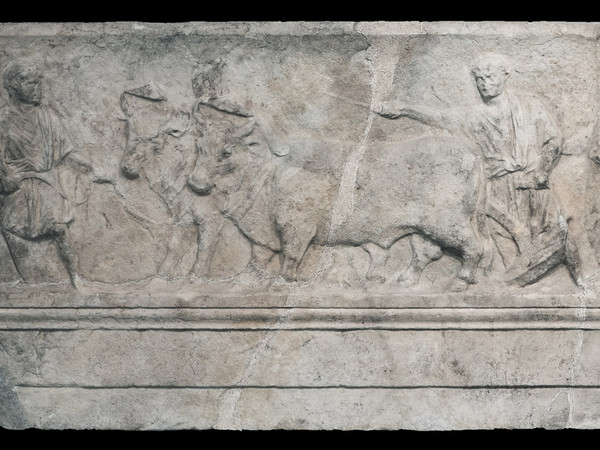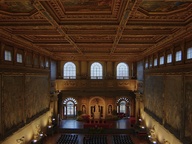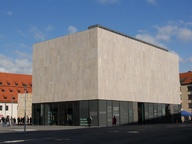Room I, relief of the “first cut of the plough”
Guida Aquileia

Room I of the National Archaeological Museum houses the section entitled Aquileia. The city and the territory, dedicated to the history and urban development of the Roman city.
The visitor is welcomed by the marble relief that recalls the foundation of the colony, and it is suggestive to see the “birth certificate” of Aquileia sculpted there, eternalized in marble in the first decades of the 1st century AD.
The scene depicts the performance of a rite that tradition traced back to Romulus. In fact, the ritual ceremony of the "first stretch of plow" or sulcus primigenius is portrayed, during which the founder, in the presence of the magistrates sent from Rome, guides the plow pulled by a bull and a cow tracing the pomerium, the sacred perimeter and impassable of the new city.
In particular, in the scene represented, the founder is raising the blade to leave the clods destined for the doors intact, the only openings allowed between the city, an organized civil space, and the surrounding territory. Precisely for this reason it is thought that the relief may have adorned one of the city gates of Aquileia.
The visitor is welcomed by the marble relief that recalls the foundation of the colony, and it is suggestive to see the “birth certificate” of Aquileia sculpted there, eternalized in marble in the first decades of the 1st century AD.
The scene depicts the performance of a rite that tradition traced back to Romulus. In fact, the ritual ceremony of the "first stretch of plow" or sulcus primigenius is portrayed, during which the founder, in the presence of the magistrates sent from Rome, guides the plow pulled by a bull and a cow tracing the pomerium, the sacred perimeter and impassable of the new city.
In particular, in the scene represented, the founder is raising the blade to leave the clods destined for the doors intact, the only openings allowed between the city, an organized civil space, and the surrounding territory. Precisely for this reason it is thought that the relief may have adorned one of the city gates of Aquileia.



